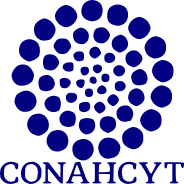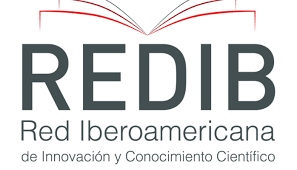Evaluation of the cytotoxic effect of ethanolic extract and terpenic saponins from Solanum elaeagnifolium on triple-negative breast cancer cells
DOI:
https://doi.org/10.18387/polibotanica.59.15Keywords:
Breast cancer, Triple negative, Solanum elaeagnifolium, Saponins, ApoptosisAbstract
In Mexico, there are at least 300 species of plants, grouped into 90 families, which are thought to have properties to fight cancer. The Solanaceae family has numerous in vitro studies that reveal anti-cancer properties. Therefore, the present work focused on identifying biomolecules in the ethanolic extract from the Solanum elaeagnifolium’s fruit with antineoplastic activity. In the said extract, cytotoxic activity was presented against triple-negative breast cancer cells. In addition to this, the presence of phytochemicals such as tannins, flavonoids, triterpenic, total glycosides, and saponins was identified. The latter were isolated and their cytotoxicity against breast cancer cells (MDA-MD-231) was observed to have an IC50 of 14.5 μg/mL. In mouse embryonic fibroblasts at this concentration, the mortality was kept below 20 %. Treatment-induced cell death exhibits a DNA degradation pattern and morphologies characteristic of apoptosis. However, more in-depth studies are suggested to determine a mechanism.
References
Alonso-Castro, A. J., Villarreal, M. L., Salazar-Olivo, L. A., Gomez-Sanchez, M., Dominguez, F., & Garcia-Carranca, A. (2011). Mexican medicinal plants used for cancer treatment: Pharmacological, phytochemical and ethnobotanical studies. Journal of Ethnopharmacology, 133(3), 945–972. https://doi.org/10.1016/j.jep.2010.11.055
Anindyajati, A., Sarmoko, S., Putri, D. D. P., Hermawan, A., & Meiyanto, E. (2010). Combination of Solanum nigrum L. Herb Ethanolic Extract and Doxorubicin Performs Synergism on T47D Breast Cancer Cells. Indonesian Journal of Cancer Chemoprevention, 1(2), 78. https://doi.org/10.14499/indonesianjcanchemoprev1iss2pp78-84
Beltran-Ontiveros, S. A., Contreras-Gutierrez, J. A., Lizarraga-Verdugo, E., Gutierrez-Grijalva, E. P., Lopez-Lopez, K., Lora-Fierro, E. H., … Diaz, D. (2024). National Burden and Trends for 29 Groups of Cancer in Mexico from 1990 to 2019: A Secondary Analysis of the Global Burden of Disease Study 2019. Cancers, 16(1). https://doi.org/10.3390/cancers16010149
Bhattacharya, S., Kohli, S., & Chaudhary, A. S. (2013). Isolation of Solasodine from the Unripe Fruits of Solanum xanthocarpum Schrad and Wendl . ( Solanaceae ) and it ’ s Anti Cancer Activity. Austral - Asian Journal of Cancer, 12(3), 199–213.
Bray, F., Laversanne, M., Sung, H., Ferlay, J., Siegel, R. L., Soerjomataram, I., & Jemal, A. (2024). Global cancer statistics 2022: GLOBOCAN estimates of incidence and mortality worldwide for 36 cancers in 185 countries. CA: A Cancer Journal for Clinicians, 74(3), 229–263. https://doi.org/10.3322/caac.21834
Calderón-Montaño, J.M., Martínez-Sánchez, S.M., Jiménez-González, V., et al. (2021). Screening for Selective Anticancer Activity of 65 Extracts of Plants Collected in Western Andalusia, Spain. Plants, 10(10), 1–19.
Chinedu, S. N., Olasumbo, A. C., Eboji, O. K., Emiloju, O. C., Olajumoke, K., & Dania, D. I. (2011). Proximate and Phytochemical Analyses of Solanum aethiopicum L . and Solanum macrocarpon L . Fruits. Research Journal of Chemical Sciences, 1(3), 63–71.
Delbrouck, J. A., Desgagné, M., Comeau, C., Bouarab, K., Malouin, F., & Boudreault, P. L. (2023). The Therapeutic Value of Solanum Steroidal (Glyco)Alkaloids: A 10-Year Comprehensive Review. Molecules, 28(13). https://doi.org/10.3390/molecules28134957
El-Hawary, S. S., Mohammed, R., Zid, S. F. A., Rateb, M. E., Sayed, A. M., & Abouzid, S. F. (2015). Cytotoxicity of Solanum nigrum L green fruits on breast (MCF-7) and liver (HepG-2) cancer cell lines. ~ 87 ~ The Pharma Innovation Journal, 3(11), 87–89. Retrieved from www.thepharmajournal.com
Feki, H., Koubaa, I., & Damak, M. (2014). Secondary metabolites and antioxidant activity of seed extracts from Solanum elaeagnifolium Cav. Mediterranean Journal of Chemistry, 2(5), 639–647. https://doi.org/10.13171/mjc.2.5.2014.05.01.22
Hawas, U. W., Soliman, G. M., El-Kassem, L. T. A., Farrag, A. R. H., Mahmoud, K., & León, F. (2013). A New Flavonoid C-Glycoside from Solanum elaeagnifolium with Hepatoprotective and Curative Activities against Paracetamol-Induced Liver Injury in Mice. Zeitschrift Für Naturforschung C, 68(May), 0019. https://doi.org/10.5560/znc.2013.68c0019
Hernández O., L., Carranza R., P., Cobos P., L. E., López L., L. I., Ascasio V., J. A., & Silva Belmares, S. Y. (2017). Bioguided fractionation from solanum elaeagnifolium to evaluate toxicity on cellular lines and breast tumor explants. Vitae, 24(2), 124–131. https://doi.org/10.17533/udea.vitae.v24n2a05
Huang, H. C., Syu, K. Y., & Lin, J. K. (2010). Chemical composition of Solanum nigrum linn extract and induction of autophagy by leaf water extract and its major flavonoids in AU565 breast cancer cells. Journal of Agricultural and Food Chemistry, 58(15), 8699–8708. https://doi.org/10.1021/jf101003v
Jiménez-González, V., Benítez, G., Pastor, J.E., López-Lázaro, M., et al. (2023). Evaluation of anticancer activity of 76 plant species collected in Andalusia (Spain) against lung cancer cells. Plants, 12(18), 3275.
Kanchana, A., & Balakrishnan, M. (2011). Anti-cancer effect of saponins isolated from Solanum trilobatum leaf extract and induction of apoptosis in human larynx cancer cell lines. International Journal of Pharmacy and Pharmaceutical Sciences, 3(SUPPL. 4), 356–364.
Kerr, A. J., Dodwell, D., McGale, P., Holt, F., Duane, F., Mannu, G., … Taylor, C. W. (2022). Adjuvant and neoadjuvant breast cancer treatments: A systematic review of their effects on mortality. Cancer Treatment Reviews, 105(March), 102375. https://doi.org/10.1016/j.ctrv.2022.102375
Li, J., Li, Q., Feng, T., & Li, K. (2008). Aqueous extract of Solanum nigrum inhibit growth of cervical carcinoma (U14) via modulating immune response of tumor bearing mice and inducing apoptosis of tumor cells. Fitoterapia, 79(7–8), 548–556. https://doi.org/10.1016/j.fitote.2008.06.010
Lucía, C. P. A., Jacqueline, B. R., Alberto, B. R. L., David, B. A., & Beatriz, R. A. (2021). Actualized inventory of medicinal plants used in traditional medicine in Oaxaca, Mexico. Journal of Ethnobiology and Ethnomedicine, 17(1), 1–15. https://doi.org/10.1186/s13002-020-00431-y
Matlashewski, G., Lamb, P., Pim, D., Peacock, J., Crawford, L., & Benchimol, S. (1984). Isolation and characterization of a human p53 cDNA clone: expression of the human p53 gene. The EMBO Journal, 3(13), 3257–3262. https://doi.org/10.1002/j.1460-2075.1984.tb02287.x
Mohsenikia, M., Alizadeh, A. M., Khodayari, S., Khodayari, H., Kouhpayeh, S. A., Karimi, A., … Mohagheghi, M. A. (2013). The protective and therapeutic effects of alpha-solanine on mice breast cancer. European Journal of Pharmacology, 718(1–3), 1–9. https://doi.org/10.1016/j.ejphar.2013.09.015
Patel, S., Gheewala, N., Suthar, A., & Shah, A. (2009). In-vitro cytotoxicity activity of solanum nigrum extract against Hela cell line and Vero cell line. International Journal of Pharmacy and Pharmaceutical Sciences, 1(SUPPL. 1), 38–46.
Sammani, A., Shammaa, E., & Chehna, F. (2013). Qualitative and quantitative qteroidal qlkaloids of Solanum species distributed widely in Syria by TLC and HPLC. Pharmaceutical Sciences Review and Research, 23(2), 23–27.
Shtivelman, E., Lifshitz, B., Gale, R. P., & Canaani, E. (1985). Used Transcript of Abl and Bcr Genes in Chronic Myelogenous Leukaemia. Nature, 315(6020), 550–554. https://doi.org/10.1038/315550a0
Son, Y. O., Kim, J., Lim, J. C., Chung, Y., Chung, G. H., & Lee, J. C. (2003). Ripe fruits of Solanum nigrum L. inhibits cell growth and induces apoptosis in MCF-7 cells. Food and Chemical Toxicology, 41(10), 1421–1428. https://doi.org/10.1016/S0278-6915(03)00161-3
Waks, A. G., & Winer, E. P. (2019). Breast Cancer Treatment: A Review. JAMA - Journal of the American Medical Association, 321(3), 288–300. https://doi.org/10.1001/jama.2018.19323
Yao, F., Song, Q. L., Zhang, L., Li, G. S., & Dai, S. J. (2013). Three new cytotoxic sesquiterpenoids from Solanum lyratum. Phytochemistry Letters, 6(3), 453–456. https://doi.org/10.1016/j.phytol.2013.05.012

Downloads
Published
Issue
Section
License

Polibotánica by Departamento de Botánica de la Escuela Nacional de Ciencias Biológicas del Instituto Politécnico Nacional se distribuye bajo una Licencia Creative Commons Atribución-NoComercial-CompartirIgual 4.0 Internacional.



















